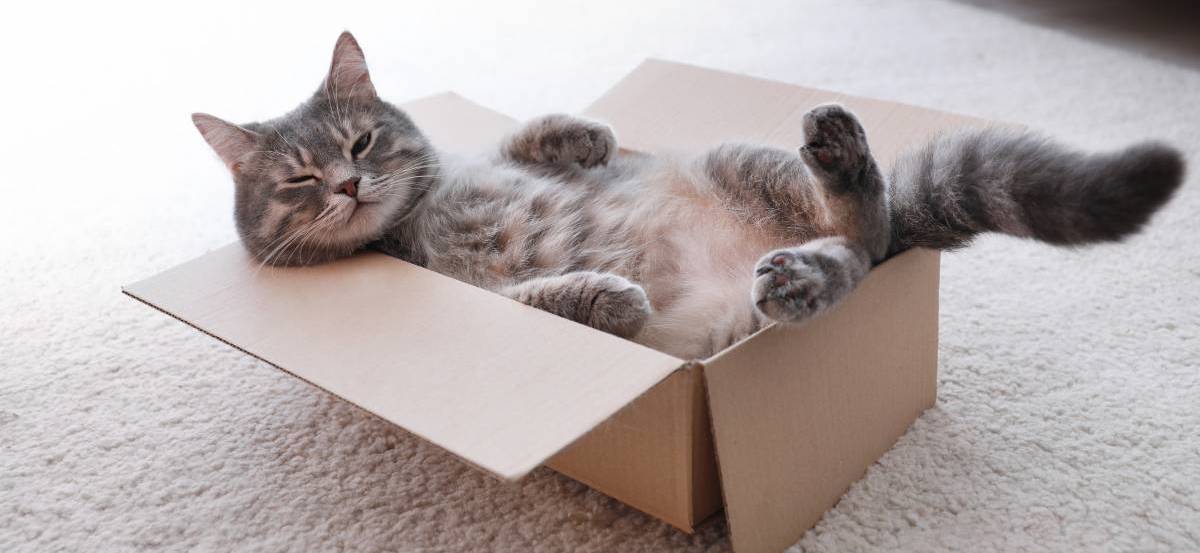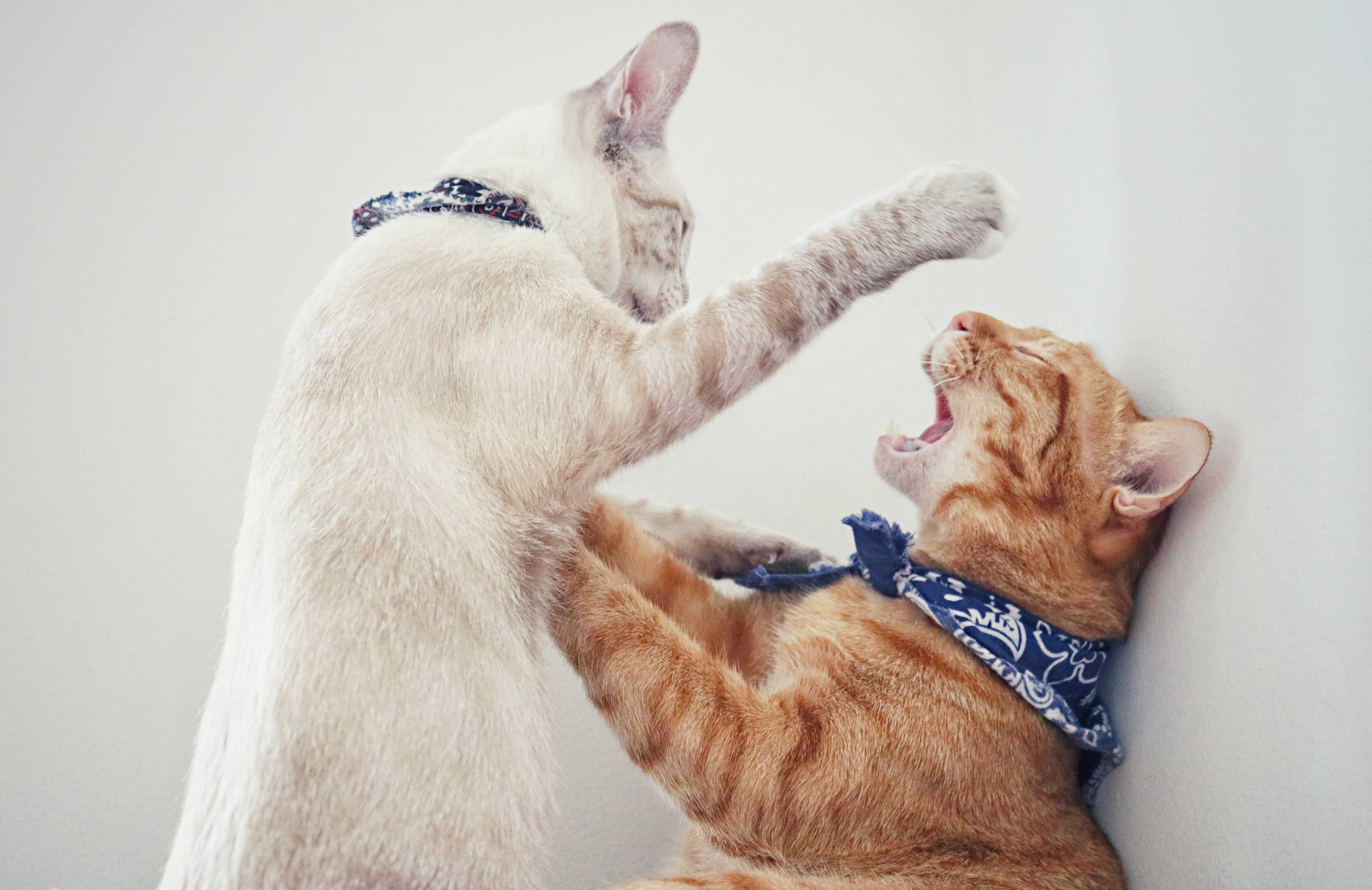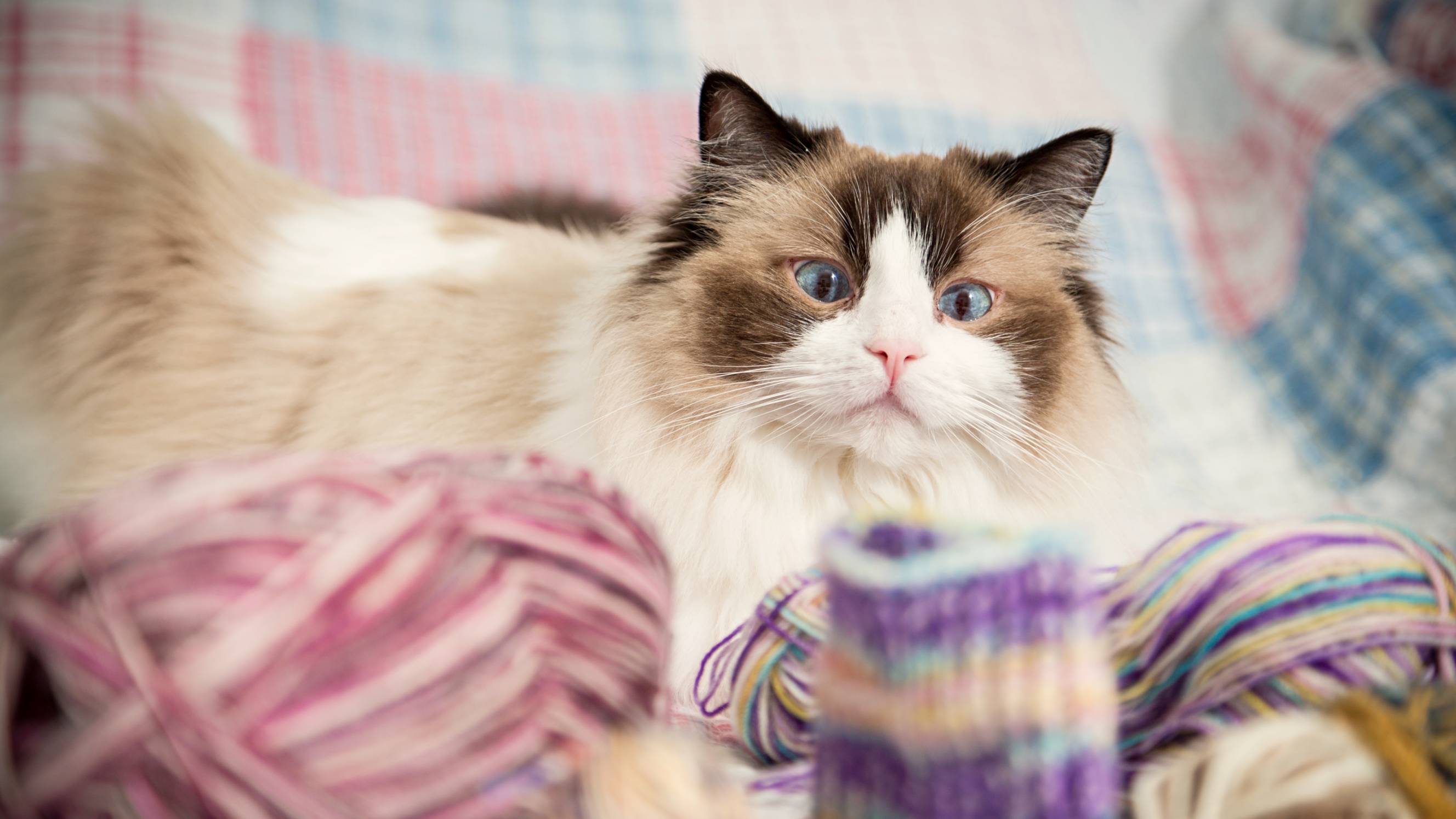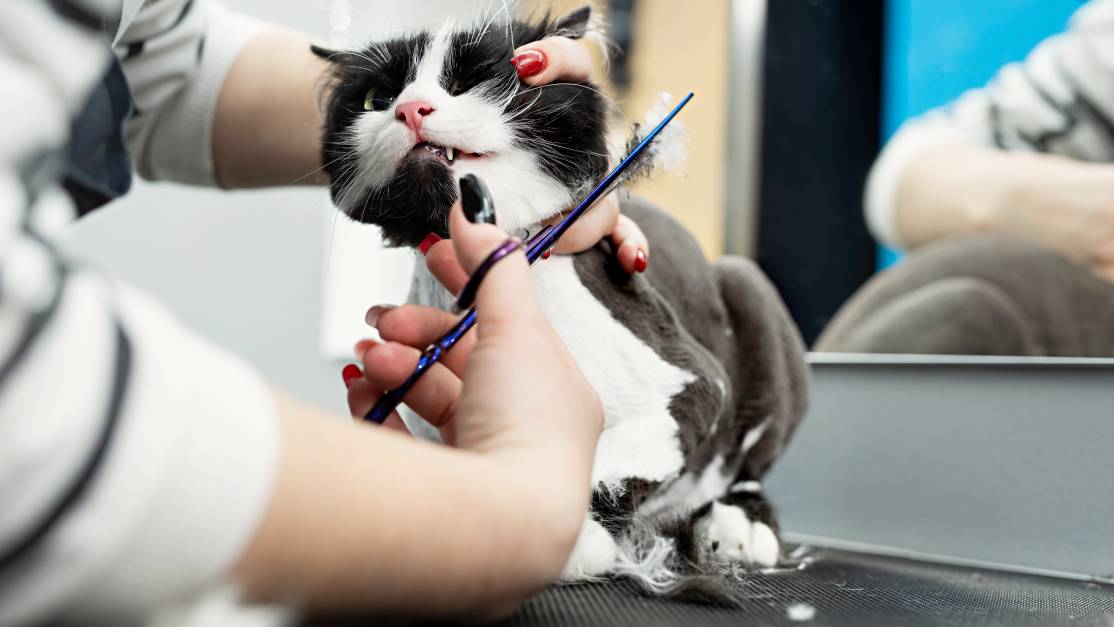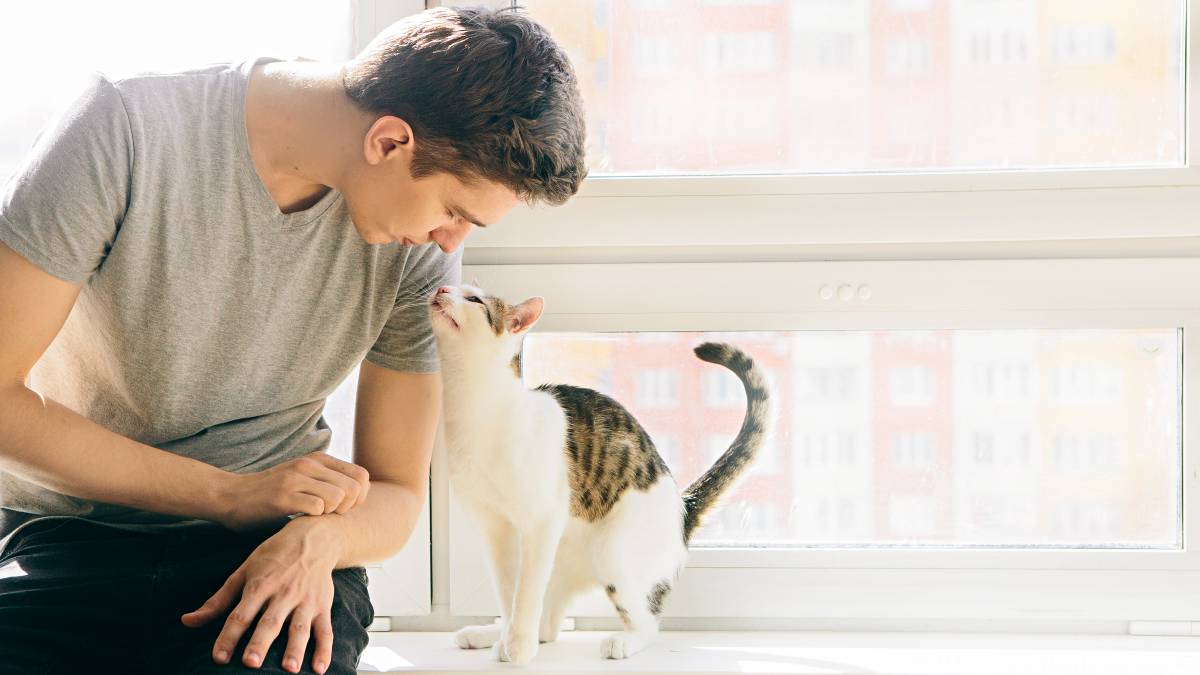- Home/
- Guides/
- Cat Training/
- Stop Cats From Scratching Furniture
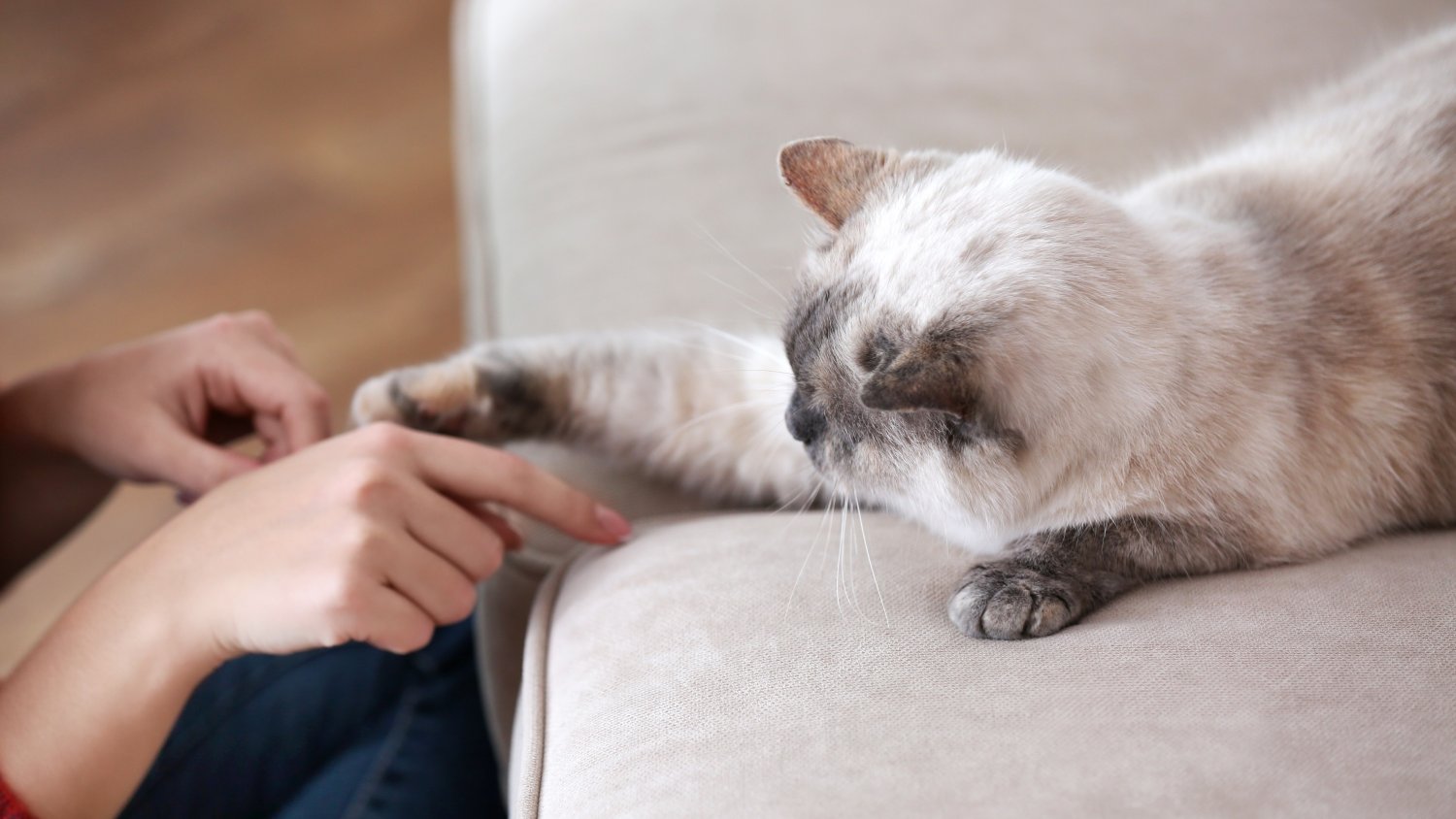
How to stop your cat from scratching your furniture
Learn how to stop cats from scratching furniture with these effective tips.
Get help training your catLast Updated on
Being a first-time cat owner teaches you a lot of things about your new BFF. You soon realize that they’re far different from dogs or any other pet and that they’re unique in their own ways. And then it just hits you: their behaviour can sometimes get to you as soon as you catch them tearing your expensive furniture apart.
Before even thinking of buying a new one and going through it again, you first need to know how to stop cats from scratching furniture.
What causes cats to scratch furniture?

When trying to address a cat care issue, it’s always smart to start by identifying the root cause. When it comes to scratching, keep in mind that this is normal, instinctive cat behaviour. Here are a few reasons why cats feel the urge to scratch furniture:
1. To mark their territory
Did you know that those little paws have a lesser-known functional use besides being cute toe beans? Cats use their claws to mark their territories, leaving a pheromone through glands found in each of their paws. These interdigital glands are used for “scent marking,” which they also do when they rub against objects around the house. So when you see them scratching on your dining table’s legs, it’s a way for them to say, “dibs.”
2. To sharpen their claws
A cat’s claws have practical purposes. They are used for climbing, hunting, and grabbing items, among other things, so cats need to keep them sharp to be more effective. However, a cat’s claws work differently from nails.
A dog’s nails work similarly to humans in that they need to be trimmed to keep them short. They could also be naturally filed when walking or running around. But a cat’s claws are retractable, so they can’t be worn down from walking, and they need to be kept sharp after clipping a cat’s claws to serve their various purposes. Scratching sheds the old outer layer and sharpens their claws at the same time.
3. To relieve stress
It may appear to be an annoying habit, but scratching is actually beneficial for your cat’s health. Not only does it keep their claws in great shape, but it is also good exercise and an excellent stress reliever. There’s nothing like digging their claws into a stable object and getting a good stretch to relax those muscles and keep their mind off that stressful chase with the neighbour’s nasty dog.
Can cats be taught not to scratch furniture?
The good news is yes, cats can be trained to stop scratching your precious furniture. While they can’t be prevented from scratching because it’s in their DNA, there are ways to keep their sharp claws away from objects you’d want to stay pristine and avoid costly furniture repairs.
How to stop cats from scratching furniture
Now that we’ve identified the causes, it would be relatively easier to stop your cat from scratching your couch, table legs, chairs, and the like.
1. Get a scratching post
A scratching post is an essential accessory for any healthy and well-adjusted cat. It serves as an outlet for their urge to scratch, saving your furniture from potential damage or even loss.
Scratching posts are available at most pet shops. Most major retailers that stock up on pet care supplies will also sell scratching posts. They come in a range of sizes and textures, the most popular being those made with carpet and rope. The scratching post you select needs to be tall enough to allow your cat to stretch and sturdy enough to take your cat’s weight.
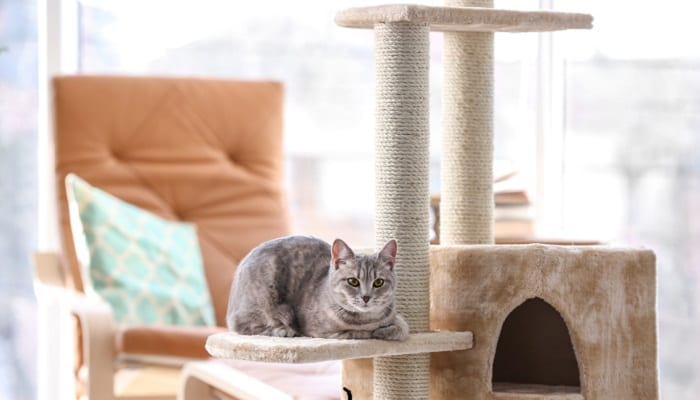
When a cat won’t stop scratching your couch, place the scratching post near its immediate area. If your furniture or goods have not fallen victim to scratching yet, put them in a convenient area for your cat. Near the front door or their favourite sleeping spot are usually effective places.
Ideally, you should provide one scratch post per cat to avoid any territorial disputes.
In need of a professional cat trainer to stop your cat from scratching? Get a FREE quote in minutes! |
2. Provide exercise and playtime
Indoor cats can be susceptible to boredom, and, unfortunately, there are times when they take it out on the soft leather of a La-Z-Boy. One way to train your cat to stop scratching furniture is to keep them busy with exercise and playtime.
Find something for them to look at or buy toys that can help keep them active. This will help ease any anxiety or tension they are feeling instead of targeting your furniture.
3. Redirect your cat’s behaviour
If you catch your cat doing some sneaky scratching in places where they shouldn’t be, encourage them to move and do something else. Use a toy or call them away from what they are working their claws on. When you catch them scratching while cat sitting, avoid yelling at or smacking your cat; this type of negative reinforcement will only give them a reason to run away and avoid you.

If you need to redirect this behaviour, a blanket or sheet is what to put on furniture to stop cat scratching until the kitty’s focus moves away from that item.
4. Use anti-scratching products
There are a few products that you can purchase at your local pet store to help you address this cat scratching issue.
Cat scratch spray - The contents are not harmful to cats and they only work as a deterrent. Spray a small area in your furniture to make sure it doesn’t damage the material then apply liberally on the furniture and its surrounding area.
Cat claw clippers - Clipping their claws regularly helps lessen any damage they can inflict on the furniture. Just make sure you don’t cut them too short and injure their digits.
Sticky deterrent strips - Apply these sticky strips on their favourite furniture and watch them feel the unpleasantness of having their paws stick to the right spots.
5. Help them feel more secure
You may notice your cat scratching near doors, windows, or cat flaps. This is a sign that it’s going through some sort of territorial insecurity. To help relieve them of this kind of stress, there are a few things you can do:
Install a cat flap to give your cat better access to outdoor territory.
Clean the areas where they are scratch-marking.
Downsize the areas they can access and restrict them from “non-essential” rooms, making them more comfortable in main rooms like the living room, hallways, and the kitchen.
Mount sitting platforms in high places to help them survey their territory and boost their confidence that their immediate area is free from intruders.
Help them scent-mark your whole house by collecting their scent from the glands found in their cheeks using a cloth and spreading them in various areas of the house.
Again, do not shout at or punish your cat; this will only increase their stress levels, giving them more reasons to scratch at your furniture.
Also read: Cat Care 101 - Tips for grooming your cat at home, long-haired cat grooming, house training, and more. |
Keep those claws away from your furniture
Dealing with cats calls for a preventive approach. You just have to do what’s necessary to prevent them from ripping your furniture to shreds. If you do it right, you’ll keep that expensive ottoman gift from Nan in pristine condition. But if you’re at wit’s end and need more help with cat care to address your cat’s scratching behaviour, reach out to a cat trainer near you.
Frequently asked questions
There are a few ways to train your cats to stop scratching your furniture. You can give them a scratch post, keep them busy through exercise and playtime, use deterrents, and make them feel more secure about their surrounding territory.
Cats dislike minty and citrusy scents such as eucalyptus, peppermint, and lemongrass. You can use these scents around furniture to help deter them from going near your furniture.
Find cat trainer, fast
Find a Cat Trainer
Related articles
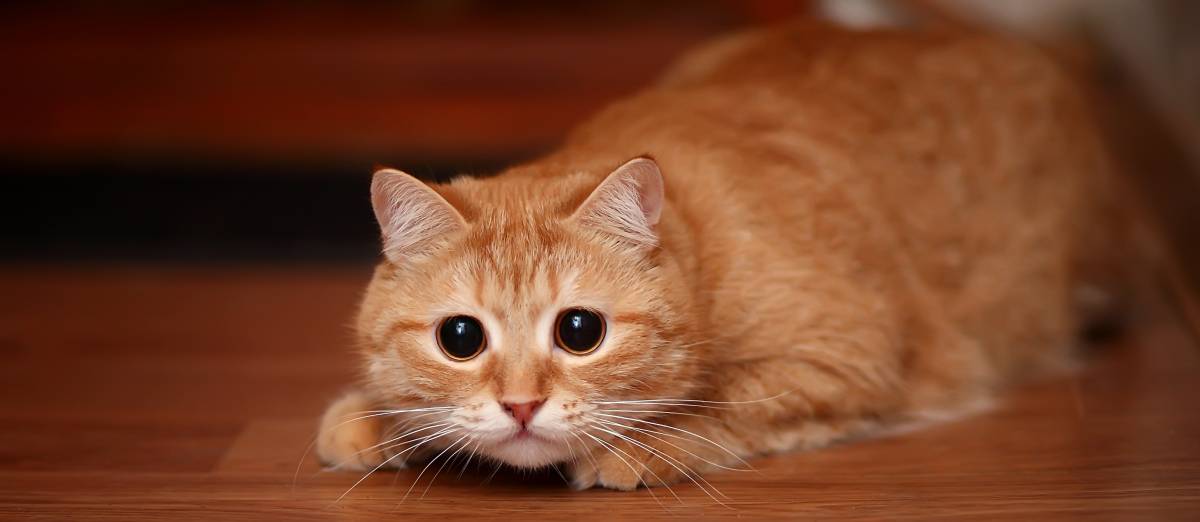
Grooming tools for anxious cats
Read more

How to groom a cat at home
Read more

5 Useful cat grooming styles
Read more
Related price guides

